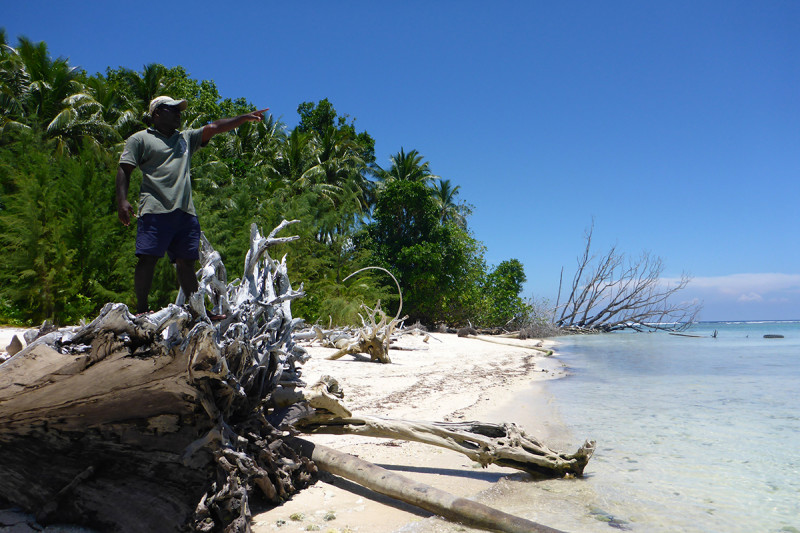 |
| Reviews and Templates for Expression We |
Five Pacific islands vanish from sight as sea levels rise
 Simon Albert
Simon Albert
Going, going, gone. Five of the Solomon Islands have been swallowed whole by rising sea levels, offering a glimpse into the future of other low-lying nations.
Sea levels in the Solomon Islands have been climbing by 7 millimetres per year over the last two decades, due to a double whammy of global warming and stronger trade winds.
“It’s a perfect storm,” says Simon Albert of the University of Queensland. “There’s the background level of global sea-level rise, and then the added pressure of a natural trade wind cycle that has been physically pushing water into the Western Pacific.”
The global rate of sea level rise is 3 millimetres per year, but is likely to accelerate to 7 by the end of the century, as rising temperatures melt ice sheets and cause thermal expansion of the oceans, Albert says.
“All the projections show that in the second half of the century, the rest of the globe will reach the rate of sea level rise that the Solomon Islands is currently experiencing,” he says.

Chris Roelfsema
Albert and his colleagues analysed aerial and satellite images from 1947 to 2014 to study the effects of creeping sea levels on the coastlines of 33 reef islands in the Solomons.
Five islands present in 1947, ranging in size from 1 to 5 hectares, had completely disappeared by 2014.
Another six islands had shrunk by 20 to 62 per cent in the same period, confirming anecdotal reports of people living in the area.
The most populated of these, Nuatambu Island, is home to 25 families, who have witnessed 11 houses wash into the sea since 2011.
Animals in the region are also under threat, says Albert. “The isolation from predators that these offshore islands provide makes them critical nesting habitats for many endangered sea turtles and birds,” he says.
Future projections
Even if global temperatures stay at current levels, seas will continue to rise over the coming centuries, says Matt King of the University of Tasmania. “Glaciers are already out of balance with their surroundings and will continue to melt,” he says. “We’re locked into a sea level rise that, under the best case scenario, will eventually reach several tens of centimetres.”
Nevertheless, the rise could end up being “much, much worse” if we don’t act to curb carbon dioxide emissions, King says.
“The questions is, how much worse do we wish to make it?” he says. “The situation in the Solomon Islands is a window into what may happen – entire nations could be facing extinction.”
|
|
|
|
Copyright remains with the original authors |